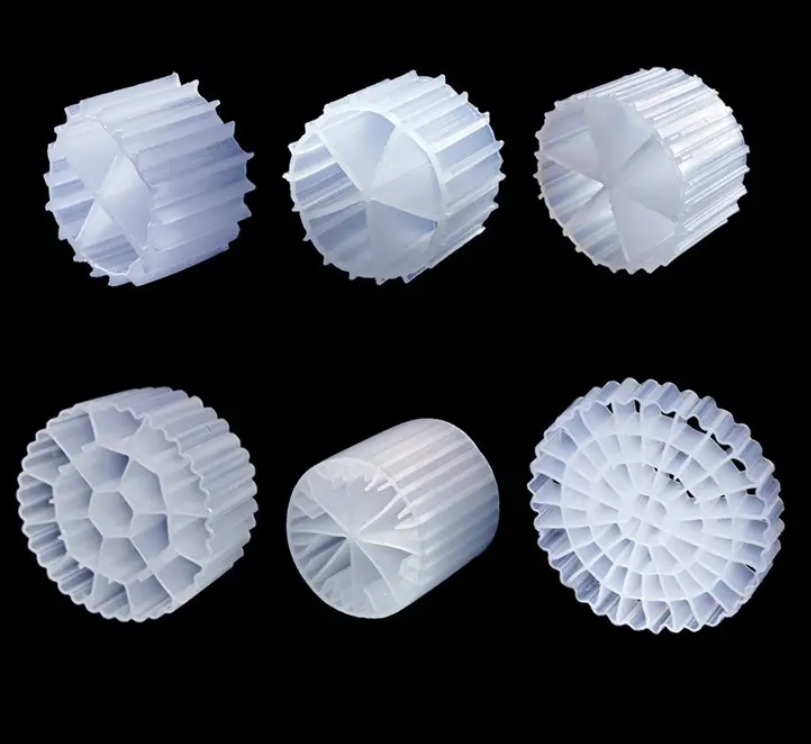troduction
In the ongoing battle to improve wastewater treatment technologies, biofilm-based systems have emerged as a sustainable solution. One of the most prominent among these is Moving Bed Biofilm Reactor (MBBR) media. Specifically, the K3 MBBR media, known for its high efficiency and durability, has gained attention in the field of environmental engineering. As we move into 2024, the K3 MBBR media continues to evolve, providing new opportunities for innovation in biological wastewater treatment.
In this article, we’ll explore how K3 MBBR media works, its distinct advantages over traditional systems, and how it compares to other biofilm-based wastewater technologies.
How K3 MBBR Media Works
K3 MBBR media operates as part of the Moving Bed Biofilm Reactor (MBBR) process, which is a hybrid wastewater treatment system that combines the benefits of both fixed-film and suspended-growth processes. The K3 media, specifically designed to provide a large surface area for biofilm growth, plays a crucial role in the efficiency of this system.
1. Biofilm Growth on K3 Media
- The K3 media consists of small, high-density polyethylene (HDPE) carriers shaped like circular discs with intricate internal designs. These carriers are added to an aeration tank where they move freely, providing surfaces for bacteria to attach and grow.
- This biofilm consists of microorganisms that naturally degrade organic matter in the wastewater. As the wastewater passes through the tank, the bacteria break down contaminants, reducing biochemical oxygen demand (BOD) and removing nutrients like nitrogen and phosphorus.
2. Self-Cleaning Mechanism
- One of the key innovations of MBBR media, including K3, is the self-cleaning nature of the system. As the carriers move within the tank due to aeration, the biofilm experiences natural abrasion, which prevents excessive accumulation and promotes continuous microbial activity. This self-regulation ensures that only the most active biofilm remains on the media, maintaining consistent treatment performance.
3. Flexibility in System Design
- K3 MBBR media can be incorporated into both new wastewater treatment plants and retrofitted into existing ones. The modular design of the media allows it to be adapted to a variety of treatment processes, including aeration, nitrification, and denitrification, making it a highly flexible solution.
By utilizing a large surface area for microbial growth, along with its self-cleaning capabilities, K3 MBBR media helps achieve more efficient and consistent biological treatment of wastewater.
Advantages of K3 MBBR Media
K3 MBBR media offers several significant advantages over other biological wastewater treatment technologies, making it a popular choice in 2024 for engineers and plant operators.
1. Increased Treatment Efficiency
- The design of K3 media provides an exceptionally high surface area-to-volume ratio, enabling more biofilm growth per carrier compared to traditional biofilm systems. This leads to more effective breakdown of organic materials and nutrients in the wastewater.
- Because of the high treatment capacity, K3 MBBR media is capable of handling higher organic loads, making it suitable for both municipal and industrial wastewater applications.
2. Compact and Space-Efficient
- K3 MBBR media allows for compact system designs since it doesn’t require large areas like conventional activated sludge systems. For treatment plants with limited space, K3 media provides a viable solution to expand capacity without requiring a significant footprint.
- The higher treatment efficiency also means that smaller tanks are needed, which reduces both capital and operational expenses.
3. Low Maintenance and Operational Costs
- Unlike traditional fixed-film systems, which often require periodic cleaning or media replacement, K3 MBBR media benefits from its self-cleaning properties. The movement of the media within the reactor continuously removes excess biofilm, reducing the need for manual cleaning or intervention.
- Additionally, MBBR systems generally have lower energy demands compared to activated sludge processes, making them more cost-effective to operate. The simplicity of the system reduces the risk of mechanical failures, contributing to lower overall operational costs.
4. Resilient to Load Fluctuations
- K3 MBBR media is highly resistant to fluctuations in organic and hydraulic loads, a common issue in many wastewater treatment facilities. This adaptability ensures stable performance even during periods of high influx or changes in wastewater composition.
- The flexibility of the K3 media allows it to be easily scaled or supplemented to accommodate increasing treatment demands, giving plants room for growth and adaptability.
These advantages position K3 MBBR media as a highly efficient, cost-effective, and adaptable solution for modern wastewater treatment facilities.
Comparison with Other Biofilm Technologies
While K3 MBBR media excels in many areas, it’s essential to understand how it compares to other biofilm-based wastewater treatment technologies, such as trickling filters, integrated fixed-film activated sludge (IFAS) systems, and fluidized bed reactors (FBR).
1. MBBR vs. Trickling Filters
- Biofilm Growth: Trickling filters rely on a stationary medium where wastewater is trickled over the surface to promote biofilm growth. However, trickling filters have limited surface area compared to the moving media used in MBBR systems.
- Efficiency: K3 MBBR media provides a higher surface area-to-volume ratio, leading to more effective treatment in a smaller space. Additionally, trickling filters require significant maintenance and are less efficient at handling high organic loads.
- Flexibility: While trickling filters are relatively simple, they lack the adaptability of K3 MBBR media, which can be used for a wider range of applications including nitrification and denitrification.
2. MBBR vs. IFAS
- Hybrid Design: IFAS systems combine both suspended growth (activated sludge) and fixed-film processes by adding media to traditional activated sludge tanks. While this provides enhanced treatment, it often comes with higher operational complexity compared to standalone MBBR systems.
- Performance: K3 MBBR media offers more consistent performance with lower energy and maintenance requirements than IFAS systems, which can experience clogging or issues with oxygen transfer.
3. MBBR vs. Fluidized Bed Reactors (FBR)
- Biofilm Mobility: Fluidized bed reactors also use media for biofilm growth but rely on high hydraulic flow rates to keep the media suspended, requiring more energy. K3 MBBR media, in contrast, is moved by aeration, making it more energy-efficient.
- Scalability: While both systems offer scalability, MBBR systems using K3 media are more adaptable to smaller-scale or retrofitted systems, whereas fluidized bed reactors tend to be more suited for large-scale operations.
- Cost: K3 MBBR media systems are generally less expensive to install and maintain compared to FBRs, making them more attractive for smaller municipalities or industrial plants with budget constraints.
In comparison with other biofilm-based systems, K3 MBBR media offers an optimal balance between performance, flexibility, and cost-effectiveness, making it a superior choice for a variety of wastewater treatment applications in 2024.
Conclusion
As environmental regulations tighten and the demand for efficient, compact, and cost-effective wastewater treatment solutions grows, K3 MBBR media is well-positioned to meet the challenges of 2024. Its innovative design, high efficiency, and adaptability make it a leading choice for environmental engineers looking to optimize wastewater treatment processes.
With its ability to handle high organic loads, resist fluctuations in treatment demands, and offer low operational costs, K3 MBBR media remains at the forefront of biofilm technologies. For engineers and plant operators, understanding the benefits and applications of K3 media is essential for implementing effective and sustainable wastewater solutions in the coming years.

